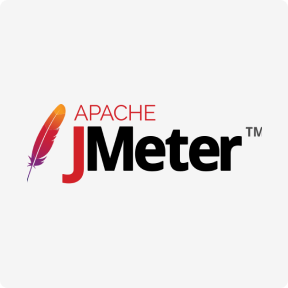Martin wanted to create a more efficient approach to software development that could handle fast-changing requirements and enable quick delivery of applications. The RAD approach was based on iterative development, where the emphasis was on building a prototype quickly and then refining it based on feedback from stakeholders. To deploy apps in the least possible time, many companies now use Rapid Application Development (RAD). RAD helps developers build higher-quality products faster through early prototyping and iterative design testing. They develop IT solutions faster using pre-built widgets, templates, and components.

This rapid pace is made possible by RAD’s focus on minimizing the planning stage and maximizing prototype development. Lastly, RAD ensures that the final product meets the stakeholders’ and end-users requirements and expectations. The involvement of stakeholders and end-users in the development process helps identify issues early and make necessary changes to suit the project’s needs. Starting with the ideas of Barry software consulting rates Boehm and others, James Martin developed the rapid application development approach during the 1980s at IBM and finally formalized it by publishing a book in 1991, Rapid Application Development. This has resulted in some confusion over the term RAD even among IT professionals. It is important to distinguish between RAD as a general alternative to the waterfall model and RAD as the specific method created by Martin.
What is RAD? Definition, Meaning and Benefits
You’re getting a rapid application development platform that can be customized to your particular workflows, and you can create and customize apps according to your specific needs. All of this makes Zoho Creator one of the most popular rapid application development tools for web development on the market. Within RAD’s model, the functional models are developed in parallel as prototypes, furthermore, these prototypes are integrated to make the complete product for faster product delivery. The process involves building a rapid prototype, delivering it to the customer, and taking feedback.

The process is iterative, meaning that feedback from the client is used to refine the prototype until the final product is delivered. RAD is particularly useful for projects with fast-changing requirements and where time-to-market is critical. The RAD model is a software development methodology that foregrounds speed and collaboration. RAD involves an iterative, incremental process that focuses on delivering a working product quickly, with ongoing feedback and collaboration from stakeholders and end-users. RAD is a linear sequential software development process model that emphasizes a concise development cycle using an element based construction approach. If the requirements are well understood and described, and the project scope is a constraint, the RAD process enables a development team to create a fully functional system within a concise time period.
The Process
Agile development is designed to take advantage of a lot of developers on a single project. In this step, prototypes and beta systems are converted into working models. Developers then gather user feedback to tweak and improve prototypes and create the best possible product. Designers and developers will work closely with clients to create and improve upon working prototypes until the final product is ready. Lucidchart makes this possible—our intuitive visual collaboration platform allows you to map out every step of the process, from scoping to building.
And project managers have taken notice—particularly among teams in industries like software development where technology, objectives, and targets are in constant flux. Implementing RAD requires a team that is well-versed in the technologies being used, able to work collaboratively, and comfortable with the iterative development process. The benefits of RAD include increased quick delivery, collaboration, reduced costs, and improved product quality. It should be carefully considered based on factors such as project type, technical complexity, and team expertise. This is because the development process is broken down into small iterative cycles, which let developers make necessary changes. The flexibility of RAD allows for changes to be made as needed, without delaying the project’s progress.
Why Is Rapid Application Development So Popular Now?
The visual nature of low-code platforms allows different team members to participate in the development process, reducing communication gaps. This streamlined collaboration results in more efficient project management and a faster time-to-market. Low code platforms are designed to be user-friendly and require minimal coding knowledge. This accessibility means that individuals beyond traditional developers, such as business analysts, subject matter experts, and citizen developers, can actively participate in the development process. It empowers teams to collaborate effectively, leveraging the expertise of various stakeholders. The critical feature of this model is the use of powerful development tools and techniques.

Another important aspect of RAD is that it is not straight and narrow; it accommodates implementing changes anytime. RAD emphasizes the concept of constructive feedback without following strict and procedural templates.
What Tools Are Available for Rapid Application Development?
With LogRocket, you can understand the scope of the issues affecting your product and prioritize the changes that need to be made. LogRocket simplifies workflows by allowing Engineering, Product, UX, and Design teams to work from the same data as you, eliminating any confusion about what needs to be done. RAD is based on modularization, which focuses on reusing code, templates, tools, and processes. This also improves the reusability of components, which saves time and cost. As a BPM suite, it offers solutions that are more drag-and-drop than sit-and-code.

Teams also spend time debugging the app and running final updates and maintenance tasks before going live. Rapid Application Development (RAD) was conceived in the 1980s, so it’s definitely not something new. It’s a continuous evolution of development philosophies according to the requirement at that particular time.
You’re signed out
These practitioners, and those like them, helped RAD gain popularity as an alternative to traditional systems project life cycle approaches. Rapid application development is particularly useful for small businesses that need software done quickly, whilst having a lot of input during the development process. Engineers and developers work tirelessly to flesh out a working system from a working model. Feedback and reviews are crucial at this stage and most bugs, issues, and alterations are addressed during this stage. This stage can be particularly long, especially in cases where clients change directions or feedback is intensive. More often than not, these prototypes are quickly made to work to showcase just the key features.
- An HRMS developed by RAD can also simplify multiple workflows such as employee onboarding, performance appraisal cycles, and leave management.
- The waterfall prototype has a big drawback in that it’s impossible to modify the software’s key features and specifications until it’s in the testing process.
- It molded itself to fit the requirements of the time while retaining some core development guidelines.
- RAD is a development paradigm that arose from realizing that the conventional waterfall model of development was ineffective.
The RAD process is intensive and requires an all-hands-on-deck mindset from your team. All final changes are made while the coders and clients continue to look for bugs in the system. This third phase is important because the client still gets to give input throughout the process.
Disadvantage of RAD Model
This method gives developers the opportunity to tweak the model as they go until they reach a satisfactory design. The fast pace of work in RAD may result in the creation of source code that is difficult to integrate with other parts of the project. Subsequently, in the sixth stage, the project team carries out tests to ensure that the software works correctly and meets all requirements. Then, in the fifth stage, the project team begins implementing the software, using the prototype as a starting point. Secondly, the project team analyzes the functional and non-functional requirements of the project. This analysis focuses on end-user needs, business requirements, and project constraints.
The waterfall methodology was built on planning and sequential design processes. The RAD concept was officially introduced to the public in 1991 with the book Rapid Application Development by James Martin. While the RAD methodology’s emphasis on rapid prototyping and iterative development has its advantages, it also has the potential for poorly designed software. The use of RAD should be considered on a case-by-case basis, depending on the project’s specific requirements and constraints.
phases of the RAD framework
You can also create your own custom reports and analytics to measure your productivity growth. Because the RAD framework focuses so much on making as many prototypes as required, this ensures that each and every function and feature is built completely, giving them the required attention. This allows for the product to have fewer defects and bugs, due to an emphasis on reusing code and using code generators. Team members must be highly skilled in order to quickly adapt to the fast pace development of the system.